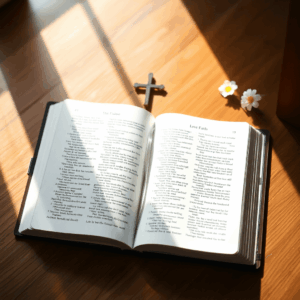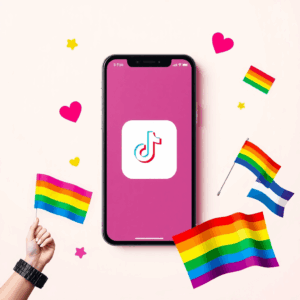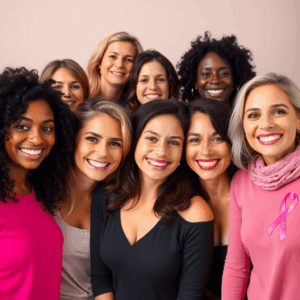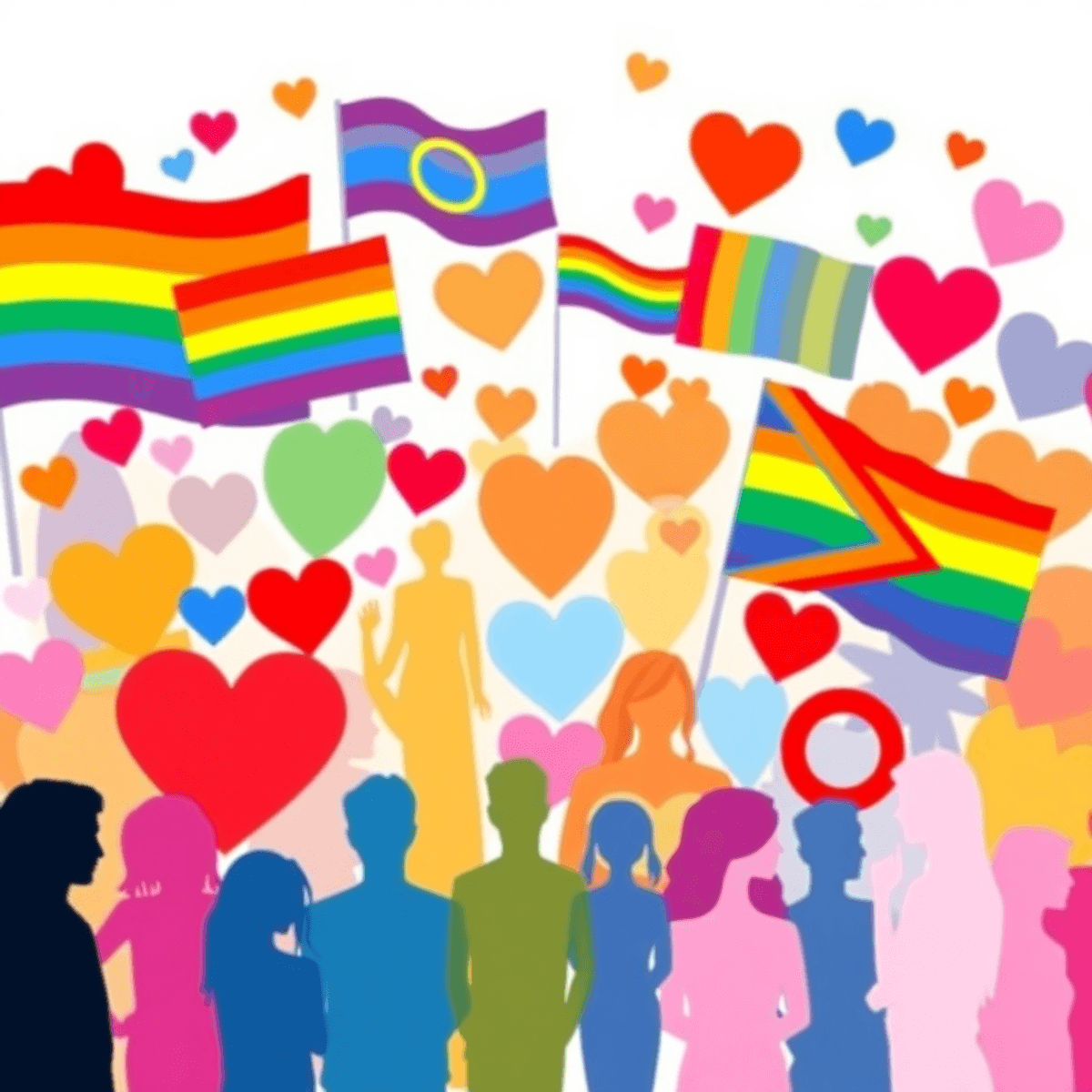Sexual orientation statistics are important for understanding the variety of human identities. They go beyond just numbers, revealing the challenges individuals face and encouraging empathy and informed discussions. When looking at the percentage of women who identify as lesbian, it’s essential to consider the factors that affect these figures.
This article explores LGBTQ demographics, specifically focusing on the rates at which women identify as lesbian. It examines both contemporary and historical viewpoints across different regions, taking into account the significance of self-identification and societal acceptance. By analyzing existing data and methods, readers can gain a comprehensive understanding of how these percentages are calculated and why they hold significance. This knowledge is valuable for promoting inclusivity and furthering research on sexual orientation diversity.
Understanding Sexual Orientation
Sexual orientation refers to an individual’s enduring physical, romantic, and emotional attraction to people of the same gender, different gender, or multiple genders. This concept is key in understanding identity and is distinct from sexual behavior, which pertains to the actions individuals take regardless of their orientation.
Differences between Sexual Orientation and Behavior:
- Sexual Orientation: An inherent aspect of who someone is, encompassing feelings and self-perception.
- Sexual Behavior: The specific actions or practices one engages in, which may not always align with one’s orientation.
The role of self-identification in determining statistics cannot be overstated. It involves how individuals perceive themselves and choose to describe their orientation. Surveys often rely on self-identification as a primary means of data collection; however, this can introduce variability. Social stigma or personal uncertainty might influence whether someone openly identifies with a particular orientation, impacting reported statistics.
Understanding these nuances helps clarify why numbers can vary so widely across studies and regions. Accurate representation of sexual orientation depends heavily on self-identification, illustrating both its power and its limitations in research contexts.
Current Statistics on Lesbian Identification Among Women
U.S. Statistics: Gallup Survey 2025
Recent data from the Gallup survey 2025 sheds light on the landscape of lesbian identification among women in the United States. According to this report, about 5.4% of Generation Z women identify specifically as lesbians. This statistic highlights a significant trend within the younger demographic that may reflect shifting societal norms and increased acceptance of diverse sexual orientations, such as those found in lesbian dating.
Gen Z Women and LGBTQ Identification
In contrast to lesbian identification, the survey reveals that a larger portion of Gen Z women—approximately 20.7%—identify as bisexual. This highlights a broader spectrum of sexual orientation within this generation, where bisexual identification is notably higher than lesbian identification.
- Overall LGBTQ Identification: Around 30% of Gen Z women identify somewhere on the LGBTQ spectrum, suggesting a growing openness in expressing non-heterosexual identities compared to previous generations.
The distinct discrepancy between those identifying as lesbian versus bisexual may point towards more nuanced understandings and acceptance among younger populations. It also indicates that while fewer Gen Z women identify strictly as lesbian, there is a significant proportion who embrace fluidity in their sexual orientation.
This detailed examination of current statistics provides valuable insights for understanding how sexual orientation is perceived and expressed among different age groups in contemporary society. The findings from this survey offer an essential perspective on how generational changes influence self-identification trends within the LGBTQ community in the U.S., particularly among young women. Understanding what it means to be a lesbian can also provide context to these statistics, shedding light on the experiences and identities of those within this group.
Historical and International Perspectives on Lesbian Identification Rates Among Women
United Kingdom Findings on Lesbian Identification Rates Among Women
Exploring the question, “What percentage of women are lesbian?”, reveals a complex landscape influenced by cultural, demographic, and methodological factors. A significant insight into this query comes from the United Kingdom. Recent surveys have shown that more than 10% of young women aged 16-24 identify as lesbian or bisexual. This figure stands out as it reflects the evolving societal attitudes towards LGBTQ identities in contemporary times.
Key Statistics from UK Surveys:
- Demographics: Over 10% of young women aged 16-24 in the UK identify as lesbian, gay, or bisexual.
- Trends Over Time: This percentage has seen a gradual increase over the years, indicating a shift in both self-identification and societal acceptance.
Cultural Influences:
Several factors contribute to these statistics:
- Progressive Legislation: The UK has been at the forefront with progressive legislation supporting LGBTQ rights, creating an environment where individuals feel safer to self-identify without fear of discrimination.
- Visibility and Representation: Increased visibility of LGBTQ individuals in media and public life encourages more young people to openly express their sexual orientation. Role models and inclusive narratives play a critical role in normalizing diverse sexual identities.
- Youth Culture: Younger generations are generally more accepting of non-traditional sexual orientations compared to older cohorts. Social media platforms also provide spaces for expression and community building among LGBTQ youth.
- Educational Initiatives: Schools and universities now incorporate comprehensive sex education that includes discussions around diverse sexual orientations, further facilitating an open dialogue among students.
These cultural factors collectively contribute to higher rates of lesbian identification among younger women in the UK compared to previous generations or other countries with less progressive stances.
Comparative International Insights
When looking beyond the UK, it’s evident that lesbian identification rates vary significantly worldwide due to differing cultural norms and levels of societal acceptance.
Australia:
- In contrast to the UK’s findings, Australian studies report about 0.8% of women identifying as lesbians. This discrepancy highlights how cultural acceptance impacts reporting and identification rates.
- Australia’s lower percentage may be attributed to different societal attitudes or variations in survey methodologies.
Understanding these international perspectives emphasizes the importance of considering cultural contexts when interpreting data on sexual orientation. While some regions show higher lesbian identification rates among women, others may reflect lower numbers due to varying levels of awareness and acceptance.
The exploration into historical data and international findings underscores that while there is no definitive answer to “What percentage of women are lesbian?”, trends suggest a growing acknowledgment and openness toward diverse sexual orientations across many societies. Continuing to examine these patterns offers valuable insights into the dynamic nature of identity and its expression globally.
Insights from an Australian Study on Lesbian Identification Rates Among Women
When looking at lesbian identification rates among women, Australia offers a different viewpoint. A study conducted in this region revealed that approximately 0.8% of women identify as lesbians. This figure is notably lower compared to the findings from other countries such as the United Kingdom or the United States, where higher percentages have been observed.
Why Do These Numbers Differ?
To understand why these numbers are different, we need to consider the cultural context and societal attitudes in Australia. Cultural acceptance plays a crucial role in influencing how individuals self-report their sexual orientation. In societies where there is greater visibility and acceptance of LGBTQ individuals, people may feel more comfortable openly identifying as lesbian, gay, or bisexual.
The Impact of Regional Differences
It’s also important to think about how regional differences affect these statistics. Australia’s societal norms and public policies regarding LGBTQ rights have changed significantly over time, but cultural conservatism in certain areas may still lead to lower self-identification rates compared to more progressive regions.
Historical Trends in U.S. Population Studies
Looking at historical data from U.S. population studies shows a pattern where earlier research indicated about 1.5% of women identified as lesbians. This is different from current trends that suggest varying rates depending on demographic factors like age and location.
These insights highlight the complexity surrounding the question: What percentage of women are lesbian? As global understanding of sexual orientation broadens and evolves, continued research into these demographics remains crucial for capturing accurate reflections of identity within diverse populations. This approach emphasizes not just statistical analysis but also an appreciation for the nuanced interplay between culture, acceptance, and self-identification in shaping these figures.
Factors Influencing Lesbian Identification Rates Among Women Such As Demographics, Methodologies, Societal Stigma, and Acceptance
Understanding what percentage of women are lesbian requires considering a range of factors that influence self-identification rates. Key among these are demographic variations, survey methodologies, and societal attitudes.
Demographics
Age and Generation: Younger generations, such as those in Generation Z, tend to report higher rates of lesbian identification. This shift may be attributed to a more open dialogue about sexual orientation.
Location and Culture: Geographic location plays a critical role. In countries with progressive views on LGBTQ rights, such as the UK or parts of the U.S., there’s a higher likelihood of individuals openly identifying as lesbian.
Survey Methodologies
The way data is collected significantly impacts reported percentages:
Methodological Approaches: Different surveys employ varied methodologies that can influence outcomes. For example, anonymous online surveys might yield different results compared to face-to-face interviews due to privacy concerns.
Question Framing: The framing of questions regarding sexual orientation can lead to differing results. Surveys need precise wording to ensure clarity and reduce ambiguity in responses.
Societal Stigma and Acceptance
Stigma Reduction: Societal acceptance influences one’s willingness to self-identify as lesbian. In environments where there is less stigma attached to being part of the LGBTQ community, individuals are likely more comfortable disclosing their sexual orientation.
Regional Variability: Acceptance varies across regions and cultures; areas with robust anti-discrimination laws typically report higher identification rates.
Challenges persist in obtaining precise statistics due to these factors, highlighting the complexity in answering “What percentage of women are lesbian?” Self-reporting biases further complicate this issue, as individuals may not disclose their true orientation due to fear of judgment or misunderstanding. Despite these challenges, continued efforts in refining data collection methods remain crucial for accurately capturing the diversity within sexual orientations.
Challenges in Collecting Accurate Data on Lesbian Identification Rates Among Women
Accurate data collection regarding sexual orientation, specifically lesbian identification among women, presents several challenges. These challenges significantly impact the reliability and validity of the statistics we often rely on for understanding this demographic.
Data Accuracy Issues
- Inconsistent Survey Methodologies: Different surveys utilize varied methodologies, impacting data accuracy. The choice of sampling techniques, question phrasing, and respondent anonymity can all lead to different outcomes. Without standardized methods, comparing results across studies becomes problematic.
- Limited Population Sample Sizes: Often, surveys focus on small or non-representative samples, skewing the results. This limitation restricts the ability to generalize findings to larger populations.
Self-Reporting Bias
Self-reporting bias can significantly affect statistical outcomes. Individuals may choose not to disclose their true sexual orientation due to personal privacy concerns or fear of judgment. This reluctance creates a discrepancy between actual and reported figures:
- Fear of Stigma: In regions where societal acceptance is low, individuals may be less inclined to self-identify as lesbians.
- Anonymity Concerns: Lack of perceived anonymity in surveys can deter honest responses.
Varying Definitions
Clear definitions are crucial when categorizing sexual orientations:
- Ambiguity in Terms: Terms like “lesbian,” “bisexual,” and “queer” may carry different meanings across cultures and individual perceptions.
- Evolving Understanding: As societal understanding of sexual orientation evolves, so do the definitions themselves, making consistent data collection challenging.
These factors collectively contribute to the complexity of accurately measuring lesbian identification rates among women. Each presents unique obstacles that researchers must navigate to produce reliable data. As the dialogue around sexual orientation continues to evolve, refining these processes remains essential for obtaining clear insights into this aspect of human identity.
Conclusion
Understanding different sexual orientations is crucial in creating an inclusive society. Statistics show that the percentage of women identifying as lesbian varies widely, from about 0.8% in Australia to over 10% among young women in the UK. This variability highlights the complexity of sexual orientation identification.
The importance of inclusive statistics cannot be overstated. They provide insight into LGBTQ demographics, assisting in shaping policies and promoting acceptance. Engaging with these figures encourages ongoing research and awareness.
To answer the question, “What percentage of women are lesbian?” it becomes clear that a definitive answer is elusive due to varying methodologies and cultural influences. Yet, this only emphasizes the need for continued exploration and understanding.
Embracing diverse identities through accurate representation will lead to greater societal understanding and support for LGBTQ individuals. The journey toward comprehensive data continues, and your involvement is vital. Stay informed, advocate for inclusivity, and contribute to a more accepting world.
FAQs (Frequently Asked Questions)
What percentage of women identify as lesbian?
Current statistics indicate that approximately 10% of young women aged 16-24 in the UK identify as lesbian or bisexual, while in the U.S., surveys show varying percentages depending on demographics and self-identification.
How does self-identification impact sexual orientation statistics?
Self-identification plays a crucial role in determining sexual orientation statistics. Individuals may identify differently based on personal, cultural, or societal factors, which can affect reported percentages.
What are the challenges in collecting accurate data on lesbian identification rates?
Challenges include data accuracy issues, self-reporting bias, and varying definitions of sexual orientations. These factors can lead to discrepancies in reported statistics and hinder a clear understanding of LGBTQ demographics.
What insights have been gathered from the Gallup survey regarding Gen Z women’s LGBTQ identification?
The Gallup survey from 2025 indicates that a notable percentage of Gen Z women identify as LGBTQ, with significant numbers identifying as either lesbian or bisexual, reflecting changing societal attitudes towards sexual orientation.
How do cultural factors influence lesbian identification rates among women?
Cultural acceptance and societal attitudes significantly impact how individuals identify their sexual orientation. Regions with higher acceptance tend to report higher identification rates among lesbians and bisexuals.
Why is it important to understand diverse sexual orientations?
Understanding diverse sexual orientations is essential for fostering inclusivity and awareness within society. It helps address stigma, informs policy-making, and encourages continued research into LGBTQ demographics.
Written by
Joshua Gonzales
You may also interested in:

What does the Bible say about lesbian women?
Explore what the Bible says about lesbian women, focusing on scripture, context, and distinctions between attraction and behavior.
Why are straight women obsessed with lesbian TikTok?
Explore why straight women are drawn to lesbian TikTok, from curiosity and identity to authentic connections and community support.
